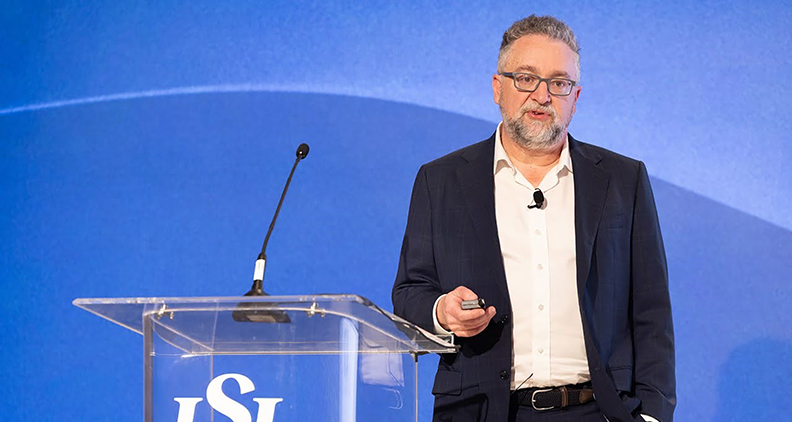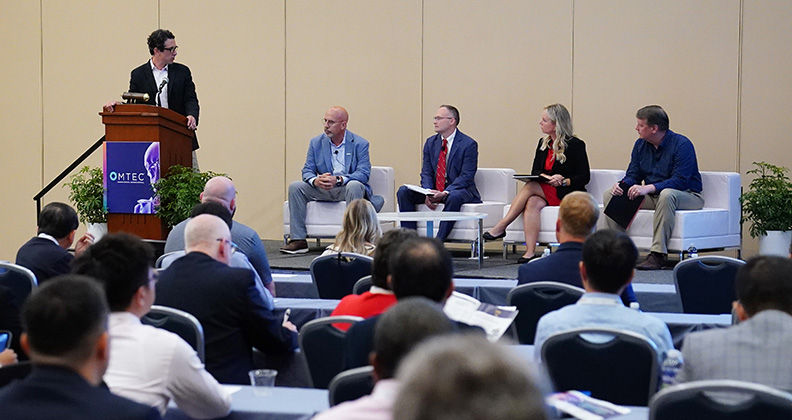
Meet Steven Haas, M.D., wearer of multiple hat-titles at Hospital for Special Surgery (HSS), including Chief of Knee Service and Co-Chair of the Quality Coordinating Committee. It was through the responsibilities of these two roles that Haas became fed up with the human errors that occurred in the operating room. Upon finding that the errors were linked to misreading variations in implant box labels and compatibility charts, he set out to automate the process through the creation of cloud-based software. Haas gave a keynote address at OMTEC® in June. And while his story is closely aligned with inefficiency in the supply chain, specifically inventory management, it offers a lesson for all of us on how to identify and effectively solve problems.
In 2014, Haas launched the OrthoSecure software system to standardize the reading of labels in the operating room. Labels vary not only among manufacturers but within the companies themselves. Research shows that human error led to the wrong implant being placed in patients 1% to 2% of the time. Further, the wrong implant was opened 5.8% of the time in total knee cases at HSS. Haas started with a focus on patient safety, but quickly realized an implant waste conundrum—both of which heavily increase hospital cost.
With the label verification technology, HSS dropped the number of wasted implants in total knee operations from 5.8% to 0.8%. The success of automating the process spurred a second thought for Haas: Why not expand the automation further into the supply chain?
At AAOS 2016, Haas and his company launched the expansion of its technology, now named OpLogix. Beyond the verification component, surgeons now enter their implant preference for upcoming cases, thereby decreasing the amount of implant and instrument inventory delivered to the operating room. Once inventory is used, the device company is notified of restocking needs. When used to its fullest, the technology decreases inventory, manpower and ultimately cost for the hospital and the device company.
Orthopaedic professionals in every division of every company are being asked to do more with less. In working through your approach to do just that, consider these lessons from Haas:
- How can you help your customer? Haas’ main focus was patient safety. Of course, he knew that if they were able to improve outcomes, that would yield a financial benefit for HSS. Haas estimates that the label verification portion of his technology can save a hospital up to $1.5 million a year. By thinking of the inventory management inefficiencies that plague his device company customers and ultimately HSS, Haas was able to identify a way to streamline that process for all involved.The future of healthcare will require device companies and their partners to work together more closely to identify mutually-beneficial solutions. For the device company/hospital relationship, that will most likely mean bundling services with the implant. We’re already seeing this in the form of outcome-measurement tools that are linked to joint replacement surgery. The question is no longer, How can I cut waste? But rather, How can I cut waste and improve the life of my customer?
- Consider best practices from other industries. Haas frequently compares orthopaedics to Amazon. In purchasing new shoes, you would never pick a style and ask Amazon to send you one of every color and every size and ask them to pay for shipping back and forth for you to purchase one pair. That sounds absurd, right? But that is largely how orthopaedics operates, and precisely why so much capital is tied up in unused inventory. By tracking surgeon implant preference prior to surgery, Haas estimates that HSS has decreased the amount of inventory in the operating room by 20% to 30%, which has also decreased the amount of manpower and sterilization services needed. Haas’ technology learns to predict surgeon preference and has the ability to automatically reorder implants, two features that Amazon also offers.To continue with the supply chain example, there’s a reason that tech and logistic companies are suddenly interested in medical devices—their processes and ideas have been successful in other industries, and they see orthopaedics as ripe for help. In thinking through your challenges, consider how other companies or industries do something so well that it’s worth replicating.
- Use your circle of influence. Haas has been a surgeon at HSS for three decades. Software is not his expertise. He was successful in launching OrthoSecure because he relied upon his business partner Mike Rowe, a veteran in software and IT solutions, and he received backing from major orthopaedic device companies with which he had longstanding relationships. When he expanded the technology to OpLogix, he brought on-staff a former orthopaedic device rep who was frustrated with supply chain inefficiency and thought Haas had an answer.When you’re living the problem day in and day out with the same people, it’s hard to get separation to identify the real answer. And sometimes you just don’t have the knowledge to get from point A to point B. Most likely, you’ll need to lean on the expertise of others within your company, as well as trusted external partners, to truly problem solve.
Haas began his keynote address with the point that it’s not the identification of problems that’s difficult, it’s actually doing something about them—the fixing. But it’s in the fixing—not just for yourself, but for your customers—that you and your company will stand out from the competition.
CL
Carolyn LaWell is ORTHOWORLD's Chief Content Officer. She joined ORTHOWORLD in 2012 to oversee its editorial and industry education. She previously served in editor roles at B2B magazines and newspapers.




